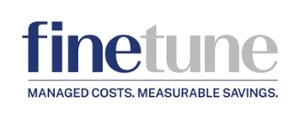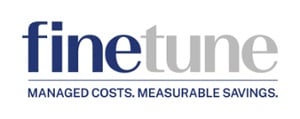Maximizing Savings Opportunities and Procurement's Strategic Value for CPOs
Saving money is not always about pinching pennies: advanced and data-driven insights enable you to identify real cost-saving opportunities, negotiate...


When you're experiencing a problem in your procurement process, how do you go about identifying where it is? Problems in procurement could include managing opposing needs across departments, struggling with visibility on the approval process, or handling spend that's getting out of control. Before you get too carried away, it's important to take a step back and make sure that your procurement problem isn't an intake problem.
How do I know whether I have an intake problem?
Ideally, when any employee needs to request company spend for a product or service, they should go through an intake process. So, what happens when this goes wrong?
Let's set the scene: The marketing team is looking to purchase several licenses for software that's new to their department, but they don't know that the sales team also has similar software with a preferred vendor with a few open seats. By the time you get looped into the conversation, they've already gotten excited about this alternative software. They've expensed one license as a trial and are starting to move their projects over.
This procurement problem, which is now resulting in added expenses, unused resources, and starting over with a new vendor, could have been solved by a proper intake process. If this scenario sounds familiar to you, you have a problem that starts at the very beginning – intake.
How can I identify what my intake problem is?
First, you'll need to find out where the breakdown in process is happening and why. In the case of the marketing team, is it because they don't believe you will help them purchase within their best interests? Or do they just not know about how procurement works in your organization?
What to do if a team doesn't trust the procurement process
If it's trust, make sure departments understand that you're looking out for them and want them to be able to purchase something that fits within their needs and is also strategically beneficial for the organization. This could happen in small team meetings, or through company-wide internal communications and training sessions.
You want internal end-users to walk away from sessions with you understanding the benefits that procurement can bring. Talk to them about how other companies have handled similar buying projects, what the goal is for pricing and how that weighs out alongside other criteria that are important to them, how the process can help pair them with exactly what they need, and how building relationships with vendors can benefit everyone in the long run.
Show employees that by participating in the intake process, they can take the burden of negotiation and licensing off their shoulders. The marketing team can tell you what they need, why they need it, and how it will help them do their job best, leaving the procurement team to take care of the rest.
What to do if a team doesn't understand the intake process
If the problem is coming from employees who are uninformed about how the intake process works, consider some company-wide trainings, or focus on specific teams that seem to be least familiar with the process.
In the case of our marketing team example, they know that they must share the same information many times before a prospect gets the message. The same applies to how you may have to handle internal communications.
Every team is inundated with process requirements, and even though procurement is important, there's a chance that intake slipped through the cracks over time. Maybe someone on the team got away with expensing something last time and figured that it was fine to do so. Maybe they think the procurement team is too busy or concerned with other matters.
Once you've identified a gap in knowledge, make sure you're onboarding new employees to what the intake process looks like. Offer refreshers from time to time and educate the teams that seem to "go rogue" and expense licenses on their own.
How can I create a strong intake process?
Of course, the previous advice only works if you have a strong intake process for employees to use. If you don't make it user-friendly, intuitive, and empowering, why would they come to you in the first place?
If you don't have an intake process in place, creating that is where you need to start. You want to be seen as a strategic partner for internal team members, and the best way to do this is to create a process with collaboration in mind.
Many organizations might use a procure-to-pay, ERP or general workflow automation system to handle intake for spend requests. Whether you have a tool in place or not, there are a number of things to consider to ensure a great employee experience and adoption of your process.
A good intake process should:
Help procurement focus on strategic sourcing – Make it easy for end-users to say they want to request a significant purchase before a conversation even starts with a vendor, so that procurement can come in and strategically source.
Reduce redundancy in vendors – Unnecessary overlap means your organization may be building relationships with two different vendors instead of building a stronger relationship with just one and spending more than you need to.
Eliminate manual tracking of approvals – Improve visibility across the process so that different teams know where things are in the approval process. Spend less time answering questions about status and more time on strategy.
Make it easy for the end-user to request exactly what they want – You should be able to ask the questions you need to get the agreements you want. Your internal team should be able to do the same. Make sure there is ample space for them to lay out their desired criteria and timeline for a final decision.
Reduce the need for employees to understand policies – Instead of asking employees to know your legal, IT, finance, and administrative policies by heart, your intake process should be configured to bring in the proper stakeholders at the right time. There's no need to overcomplicate things.
If you have an intake problem, Zip can help
At Zip, we've created the world's leading intake-to-procure solution, offering a consumer-grade user experience in the world of B2B purchasing. We wanted to make our procurement software experience comparable to anything consumers experience in SaaS, so that’s who we hired to design and develop our tools. Our user-friendly platform improves adoption, spend visibility, and ensures compliance throughout the process.
Don't let an intake problem snowball into a procurement problem. Stop the issue where it starts. Contact Zip for a demo today.

Saving money is not always about pinching pennies: advanced and data-driven insights enable you to identify real cost-saving opportunities, negotiate...

The topic of our recent roundtable discussion with a dozen Procurement Foundry community members—exploring potential flaws in procurement incentive...

Every 30 days or so, I get the same alert on my phone—“Your electricity bill is available for viewing.” I take a quick look, make sure nothing seems...